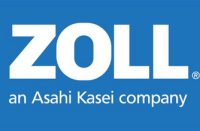The Company expands into exploration of its novel signal processing technology in physiologic pacing procedures
Westport, CT, Sept. 13, 2021 (GLOBE NEWSWIRE) — BioSig Technologies, Inc. (Nasdaq: BSGM) (“BioSig” or the “Company”), a medical technology company commercializing an innovative signal processing platform designed to improve signal fidelity and uncover the full range of ECG and intra-cardiac signals, today announced the Company would be installing a PURE EP(tm) System for evaluation at St. Elizabeth’s Medical Center in Boston, MA.
The Company initiated this new evaluation program under the leadership of Michael Orlov, M.D., aiming to assess the PURE EP(tm) System during a series of physiologic pacing procedures. Physiologic pacing is an emerging pacing technique designed to activate the normal cardiac conduction system and synchronize contraction of the ventricles. This approach to pacing the heart has demonstrated improved clinical and hemodynamic benefits beyond standard pacing techniques.
“We are pleased to grow our clinical presence in Boston and collaborate with Dr. Orlov on this expanded use of the PURE EP(tm) System. The physiologic pacing procedure could benefit from advanced signal information to optimize lead placement and improve procedural outcomes. We look forward to combining our cardiac signal acquisition technology with advanced pacing therapies to treat more cardiac rhythm disorders,” commented Kenneth L. Londoner, Chairman, and CEO of BioSig Technologies, Inc.
“This marks our 13th hospital partner, and we remain on track to achieve our 2021 goals of targeted market expansion.”
The PURE EP(tm) is an FDA 510(k) cleared non-invasive class II device that aims to drive procedural efficiency and efficacy in cardiac electrophysiology. To date, over 60 physicians have completed over 1300 patient cases with the PURE EP(tm) System across twelve clinical sites.
The Company recently completed its first multi-centered, prospective clinical trial and presented preliminary clinical data during the annual Heart Rhythm 2021 convention in July in Boston, MA.
The Company is in a focused commercial launch of the PURE EP(tm) System in the Northeast, Texas, and Florida and is in regular use in some of the country’s leading centers of excellence, including the Mayo Clinic in Rochester, MN, and St. David’s Medical Center in Austin, TX.
One in 18 Americans suffers from a cardiac arrhythmia. Atrial fibrillation is the most common arrhythmia type, affecting over 33 million people worldwide, including over 6 million in the U.S. The number of people suffering from atrial fibrillation is expected to reach 8-12 million by 20501. According to the Centers for Disease Control and Prevention (CDC), atrial fibrillation causes more than 750,000 hospitalizations in the U.S. each year, resulting in approximately $6 billion in healthcare spending annually2.
About St. Elizabeth’s Medical Center
St. Elizabeth’s Medical Center, a Boston University Teaching Hospital, offers patients access to some of Boston’s most respected physicians and advanced treatments for a full range of medical specialties, including family medicine, cardiovascular care, women and infants’ health, cancer care, neurology care, and orthopedics. The 308-bed tertiary care facility is part of Steward Health Care.
About BioSig Technologies
BioSig Technologies is a medical technology company commercializing a proprietary biomedical signal processing platform designed to improve signal fidelity and uncover the full range of ECG and intra-cardiac signals (www.biosig.com).
The Company’s first product, PURE EP(tm) System is a computerized system intended for acquiring, digitizing, amplifying, filtering, measuring and calculating, displaying, recording, and storing electrocardiographic and intracardiac signals for patients undergoing electrophysiology (EP) procedures in an EP laboratory.
Forward-looking Statements
This press release contains “forward-looking statements.” Such statements may be preceded by the words “intends,” “may,” “will,” “plans,” “expects,” “anticipates,” “projects,” “predicts,” “estimates,” “aims,” “believes,” “hopes,” “potential” or similar words. Forward- looking statements are not guarantees of future performance, are based on certain assumptions and are subject to various known and unknown risks and uncertainties, many of which are beyond the Company’s control, and cannot be predicted or quantified and consequently, actual results may differ materially from those expressed or implied by such forward-looking statements. Such risks and uncertainties include, without limitation, risks and uncertainties associated with (i) the geographic, social and economic impact of COVID-19 on our ability to conduct our business and raise capital in the future when needed, (ii) our inability to manufacture our products and product candidates on a commercial scale on our own, or in collaboration with third parties; (iii) difficulties in obtaining financing on commercially reasonable terms; (iv) changes in the size and nature of our competition; (v) loss of one or more key executives or scientists; and (vi) difficulties in securing regulatory approval to market our products and product candidates. More detailed information about the Company and the risk factors that may affect the realization of forward-looking statements is set forth in the Company’s filings with the Securities and Exchange Commission (SEC), including the Company’s Annual Report on Form 10-K and its Quarterly Reports on Form 10-Q. Investors and security holders are urged to read these documents free of charge on the SEC’s website at http://www.sec.gov. The Company assumes no obligation to publicly update or revise its forward-looking statements as a result of new information, future events or otherwise.
1 Top 10 Things You should Know About Heart Rhythm; Scripps Health.
2 Managing Atrial Fibrillation; Lisa Eramom MA, Medical Economics Journal, February 25, 2019, Volume 96, Issue 4






